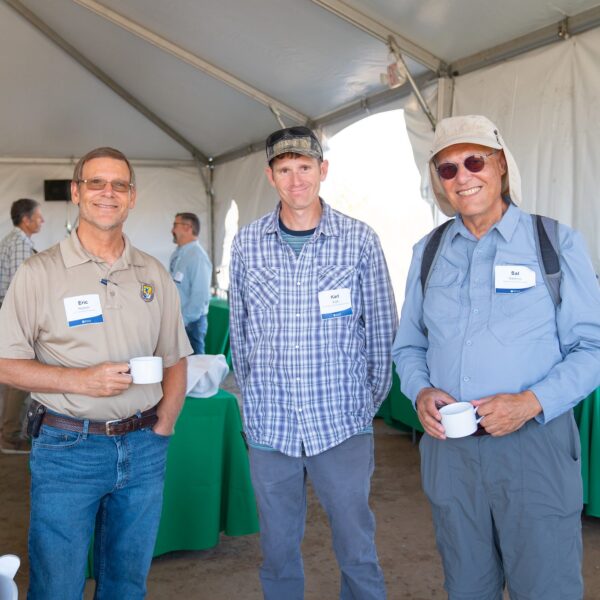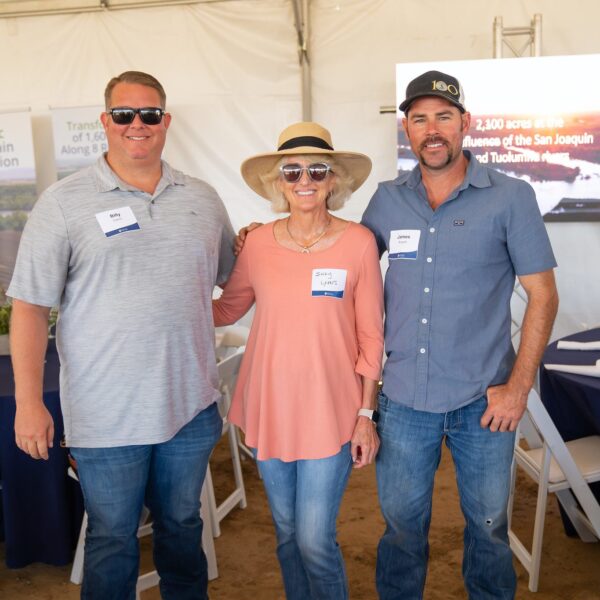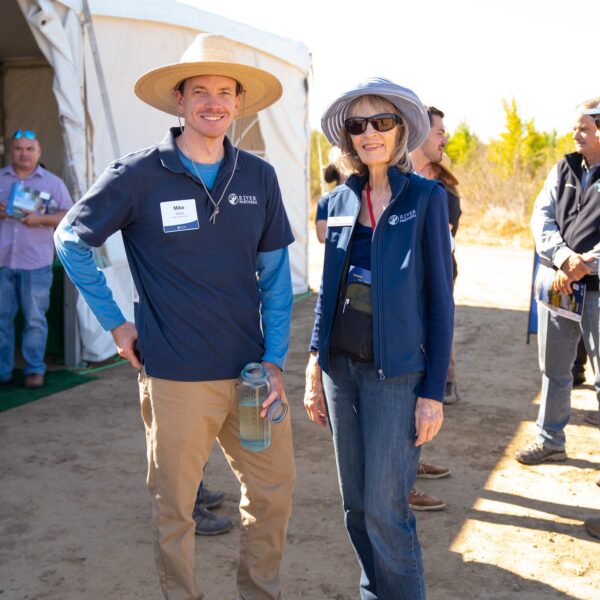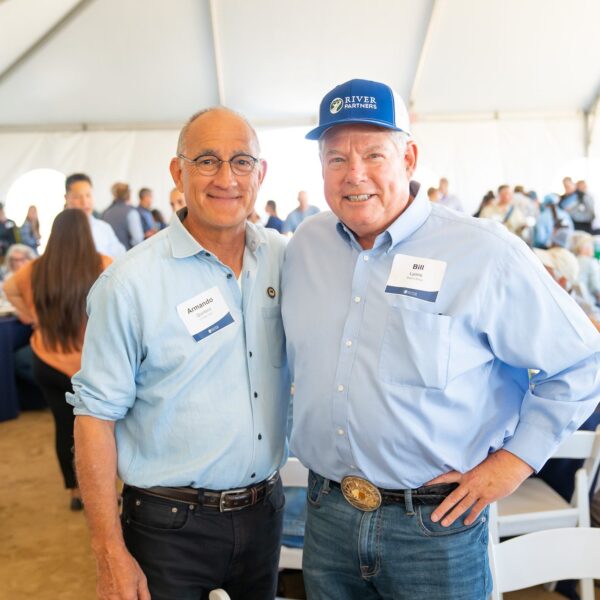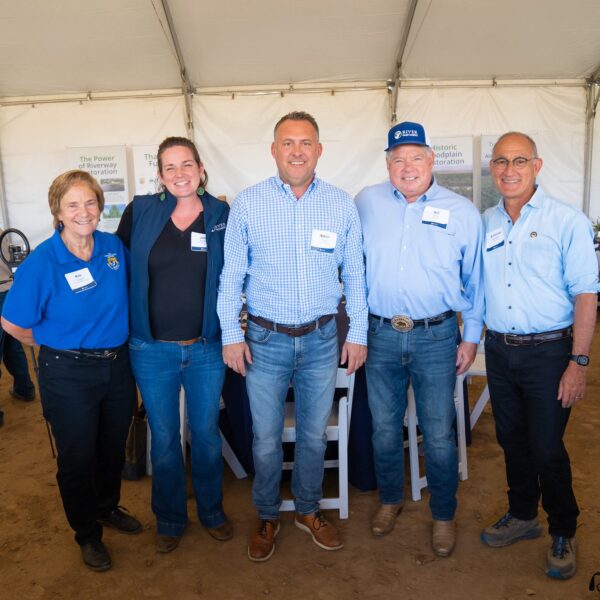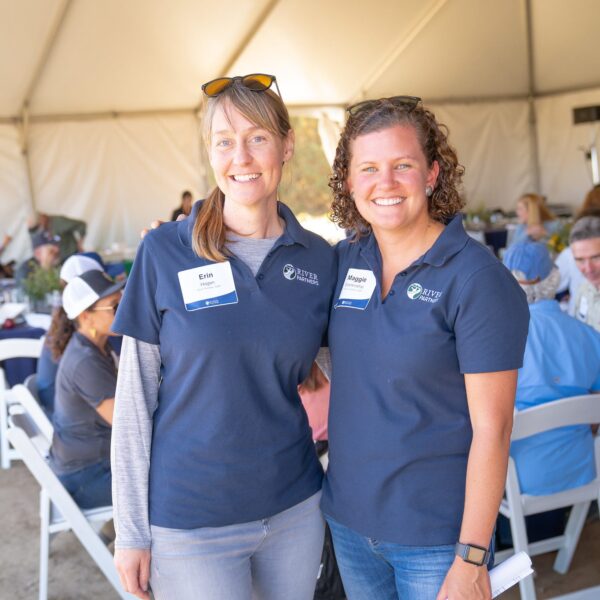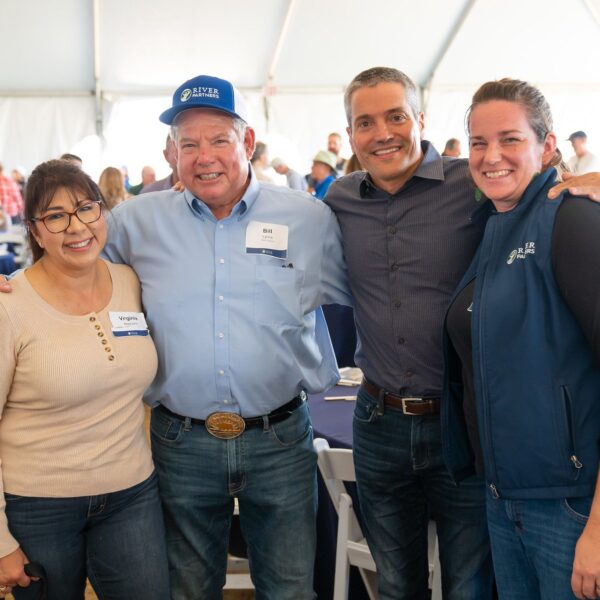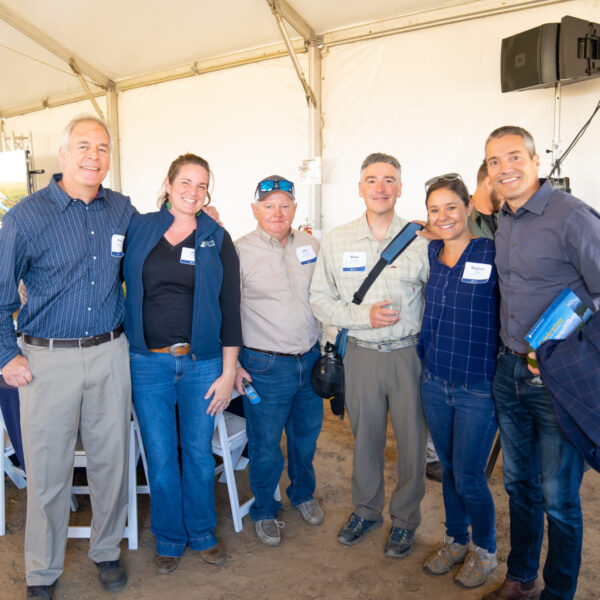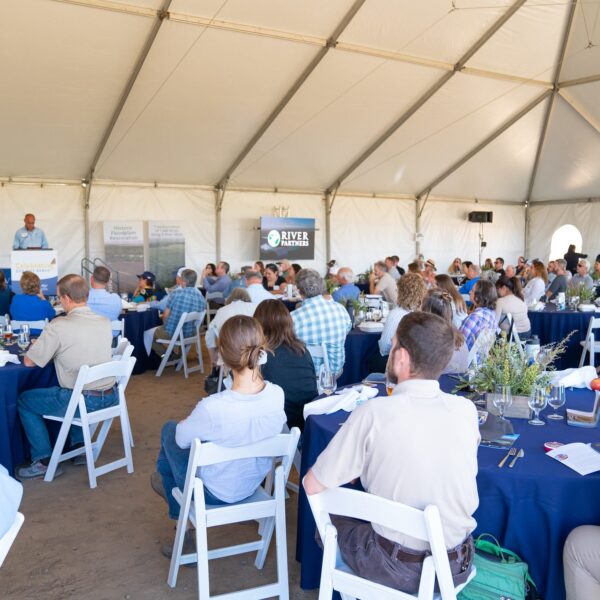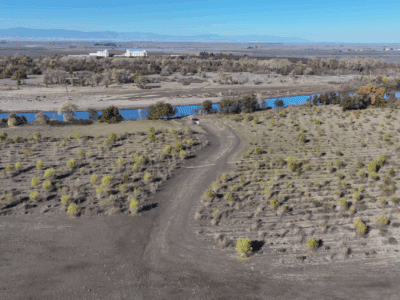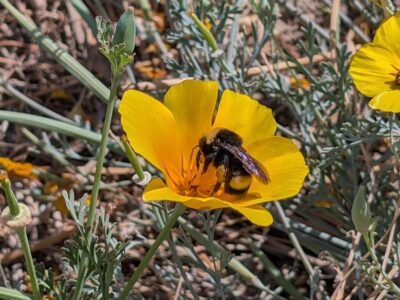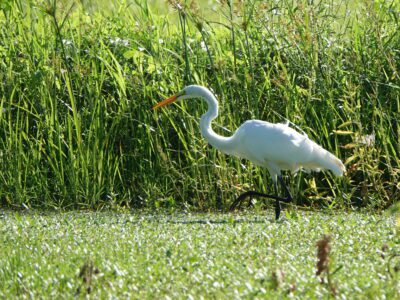This month, nearly 200 public and private partners gathered to commemorate a decade of visionary action in transforming Dos Rios Ranch into a model of multi-benefit floodplain restoration that pays big dividends for the San Joaquin Valley’s environment and people. Those dividends will keep coming for generations.

The exemplary collaboration between public and private partners in making Dos Rios Ranch a reality embodies the power and promise of revitalizing California’s riverways to mitigate future flood risk, bring back endangered wildlife, recharge depleted groundwater, capture carbon naturally, boost recreational opportunities and public health, and more.
Speakers included Wade Crowfoot, California Natural Resources Secretary; Armando Quintero, California State Parks Director; Adam Gray, District 21 Assemblymember; Tim Ramirez, Central Valley Flood Protection Board Member; Julie Rentner, River Partners President; Peter Drekmeir, Tuolumne River Trust Policy Director; Kimberly Stevenot, California Indian Basketweavers’ Association Co-founder; and Raquel Williams, member of the Wilton Rancheria.
The Transformation of Dos Rios
Located at the confluence of the Tuolumne and San Joaquin rivers in the heart of the San Joaquin Valley, Dos Rios Ranch Preserve is the largest public-private floodplain restoration project in California’s history: 2,100 acres along 8 river miles, conserving 7,000 acre-feet of freshwater annually.
Watch: Restoration at Dos Rios in Action
This year, Dos Rios Ranch was chosen to become the newest California State Park in nearly a decade and a half. It will provide critically-needed green space in the park-starved San Joaquin Valley, and could open as soon as 2023.
The preserve’s Native Use Garden, created in partnership with the California Indian Basketweavers’ Association and the Tuolumne Band of Me-Wuk Indians, will continue to provide native plant materials used for basketmaking and other Native Californian cultural arts.

Located adjacent to the approximately 7,000-acre San Joaquin River National Wildlife Refuge, the two properties create one of the largest contiguous floodplains in the Central Valley, whose restoration led to the de-listing of the endangered Aleutian Cackling Goose and is supporting the recovery of the endangered riparian brush rabbit and western monarch butterfly.
We designed habitat at Dos Rios Ranch to go far beyond a single-species focus, though, actively balancing the needs of the entire ecosystem. Riparian brush rabbit, least Bell’s vireo, Swainson’s hawk, juvenile Chinook salmon, and western monarch butterflies all call the ranch home.
In addition to providing important habitat for struggling native California wildlife, the restored floodplain enhances flood protection for downstream communities by slowing down floodwater and letting it soak into the ground. New floodplain forests capture carbon dioxide at more than twice the rate of mature forests, boosting the state’s climate resiliency. These forests also combat the effects of drought by recharging and purifying groundwater, increasing freshwater supplies for wildlife, farming, and households.
Working Together at a Pace and Scale that Matter
Dos Rios Ranch is a powerful example of what can be achieved working together under the banner of common ground, purpose. It’s an approach California is going to need a lot more of. Climate-driven challenges like more frequent, intense droughts and floods are going to test the limits of our natural resources—and our resilience as individuals and collectives.
What we were able to achieve together at Dos Rios Ranch gives us all hope that a thriving future for the Valley and beyond are well within reach—through collaboration. There’s no time to waste. The communities and wildlife that depend on healthy riverways are counting on us.
The Dos Rios Ranch project was delivered with deep engagement from both public and private funding partners at the local, state, and national levels from the following generous sources: (federal) the National Fish and Wildlife Foundation, Natural Resources Conservation Service, U.S. Bureau of Reclamation, U.S. Fish and Wildlife Service; (state) CA Dept. of Water Resources, CA Dept. of Fish and Wildlife, CA Natural Resources Agency, CA State Parks, CA Wildlife Conservation Board; (local) River Partners, San Francisco Public Utilities Commission, Stanislaus County Public Works Department, Tuolumne River Trust; (private) the Firedoll Foundation, Mape’s Ranch, New Belgium Brewing Company, Pacific Gas and Electric Company, Resources Legacy Fund, Sierra Nevada Brewing Company, and the Volgenau Foundation.
Celebrating Collective Action
